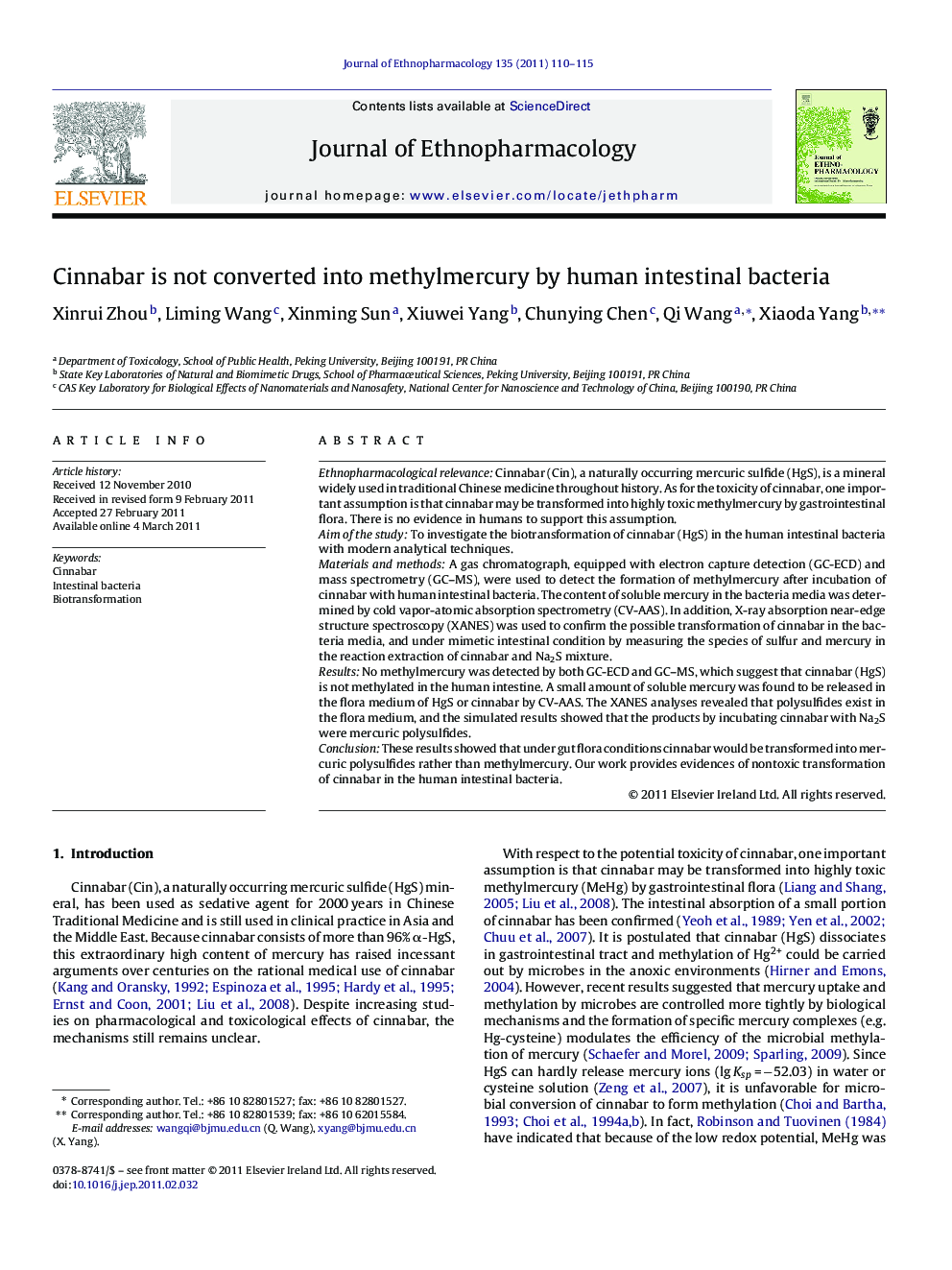| کد مقاله | کد نشریه | سال انتشار | مقاله انگلیسی | نسخه تمام متن |
|---|---|---|---|---|
| 2545810 | 1124005 | 2011 | 6 صفحه PDF | دانلود رایگان |

Ethnopharmacological relevanceCinnabar (Cin), a naturally occurring mercuric sulfide (HgS), is a mineral widely used in traditional Chinese medicine throughout history. As for the toxicity of cinnabar, one important assumption is that cinnabar may be transformed into highly toxic methylmercury by gastrointestinal flora. There is no evidence in humans to support this assumption.Aim of the studyTo investigate the biotransformation of cinnabar (HgS) in the human intestinal bacteria with modern analytical techniques.Materials and methodsA gas chromatograph, equipped with electron capture detection (GC-ECD) and mass spectrometry (GC–MS), were used to detect the formation of methylmercury after incubation of cinnabar with human intestinal bacteria. The content of soluble mercury in the bacteria media was determined by cold vapor-atomic absorption spectrometry (CV-AAS). In addition, X-ray absorption near-edge structure spectroscopy (XANES) was used to confirm the possible transformation of cinnabar in the bacteria media, and under mimetic intestinal condition by measuring the species of sulfur and mercury in the reaction extraction of cinnabar and Na2S mixture.ResultsNo methylmercury was detected by both GC-ECD and GC–MS, which suggest that cinnabar (HgS) is not methylated in the human intestine. A small amount of soluble mercury was found to be released in the flora medium of HgS or cinnabar by CV-AAS. The XANES analyses revealed that polysulfides exist in the flora medium, and the simulated results showed that the products by incubating cinnabar with Na2S were mercuric polysulfides.ConclusionThese results showed that under gut flora conditions cinnabar would be transformed into mercuric polysulfides rather than methylmercury. Our work provides evidences of nontoxic transformation of cinnabar in the human intestinal bacteria.
Figure optionsDownload as PowerPoint slide
Journal: Journal of Ethnopharmacology - Volume 135, Issue 1, 26 April 2011, Pages 110–115